"À Table!", a magnifique six-course French dinner at Morpheus

Come, join me as I take you through “À Table!”, a French dinner crafted by two of Penang’s brightest culinary talents, Chef Andy Lai of Morpheus and Chef Hooi Shing of Le Petit Four Pâtisserie. Held in celebration of Le Cordon Bleu’s 130th anniversary and in conjunction with the French Festival’s “Gastronomy Month", the evening hosted by Alliance Francaise Penang was anything but ordinary.
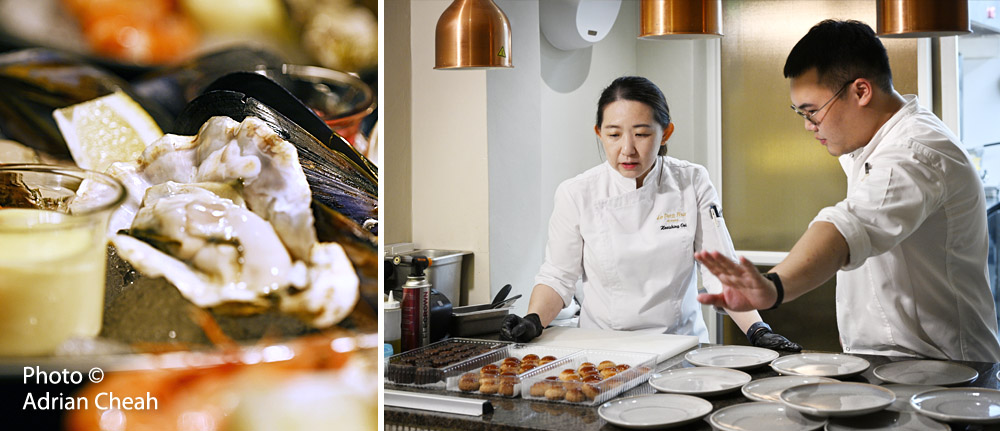
Chef Andy, ever the quiet maestro of flavour, can make a sauce sing and hit every note with precision. Chef Hooi Shing, the artist of pastry, sculpts masterpieces out of flour, patience, and intuition. When their names appeared side by side on the event poster, I did not hesitate. Reservations were made for my wife and I before reason could intervene.
And so here we are. Pull up your chair, my dear reader. Taste with your mind, listen with your heart. Let the words and photographs carry you through the narrative course by course, sip by sip. Bon appétit.
The Sea’s Overture
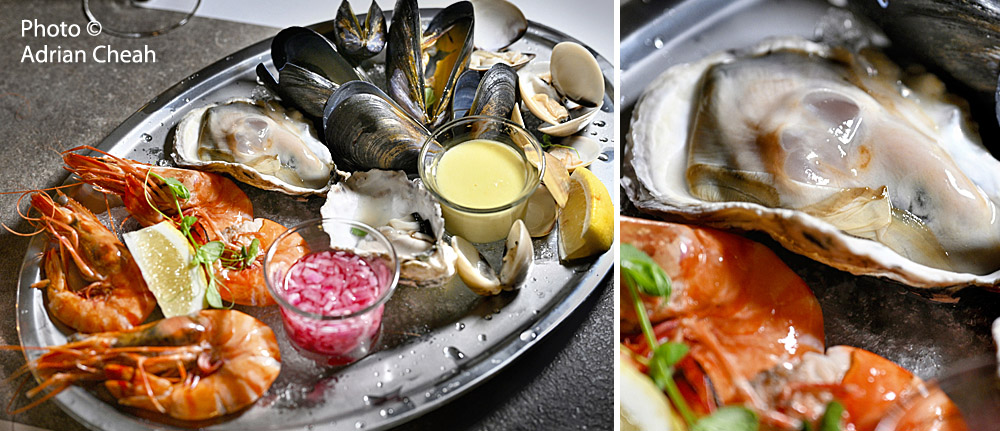
The opening act was pure theatre with fresh oysters, prawns, mussels, and clams glistening over crushed ice. Like jewels in a treasure chest of the seven seas, the seafood platter arrived with its classic accompaniments—a rosy mignonette vinegar, house-made aioli, French butter, and slices of toasted baguette.

The mignonette, a translucent blush of red wine vinegar and finely chopped shallots, is a French classic for oysters. Its sharpness lifts the brine, adding a touch of acidity. Délicieux! The aioli, on the other hand, lent its creamy garlic warmth to the prawns and mussels.
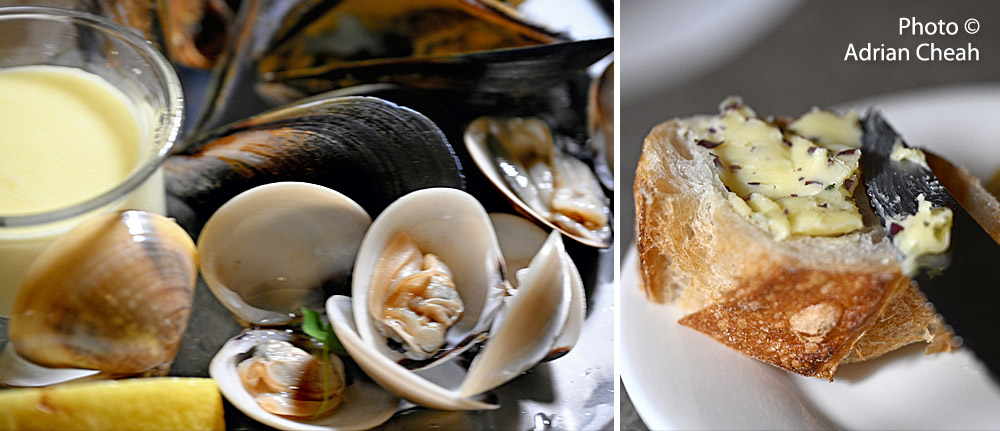
There is butter, and then there is Bordier butter, rich, cultured, and full of character. With its higher butterfat content and gentle fermentation, it develops a deeper, more nuanced flavour, almost tangy yet never sour. This one, infused with seaweed, carried a subtle umami flavour of the ocean. Spreading it over slices of baguette felt utterly right, as if they were made for each other, though I wished the bread had arrived warm and lightly toasted.

The dinner offered a wine pairing, which my better half gladly opted for. To complement the seafood platter came a glass of Legras & Haas Intuition Brut Champagne from Chouilly. It sparkled with confidence, teasing out the sweetness of the prawns and the salinity of the oysters.
I “borrowed” a sip, just enough to understand and to put it into words. I chose not to indulge in the full pairing as I am not a heavy drinker. Two glasses in, and my skin usually declares mutiny, rashes blooming like modern art. Friends joke that I sip with the deliberation of a monk, but I know it is a blessing. I like my wits where they belong, fully sober and awake, able to carry on a proper conversation, or at least sound like I can.
Canapés, One-Bite Wonders


A trio of duck croquette, chicken liver pâté, and crab tartelette followed. Although small bites, they were big on flavours. The circular duck croquette was golden and crisp, its shell giving way to a delicious savoury filling. The chicken pâté was smooth and rich, with a depth that hinted at bay leaf and maybe Cognac. The petite crab and baby pea tartelette was delicate and beautiful. All gone too soon.
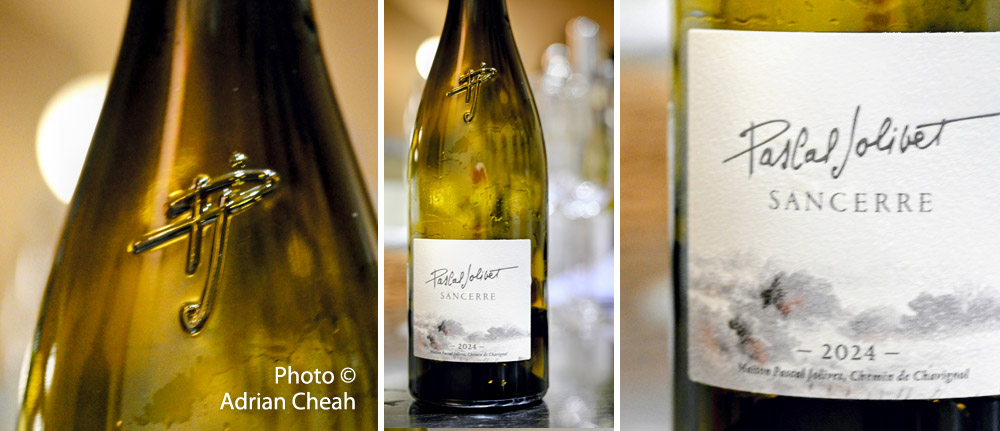
With it came a pour of Pascal Jolivet’s Sancerre Blanc 2024, a wine from the Loire Valley. My research told me it should offer "aromas of citrus, white fruit, gunflint, and subtle herbal notes. On the palate, it is elegant and fresh, with hints of lime, green apple, and gooseberry, leading to a long, mineral finish". I am no wine connoisseur, and truth be told, I could hardly detect all that. But I do know this: when a wine is well chosen, it does not decorate a dish, it translates it. And here, it did.
Crème du Barry: A Cauliflower Potage with an Intriguing Name
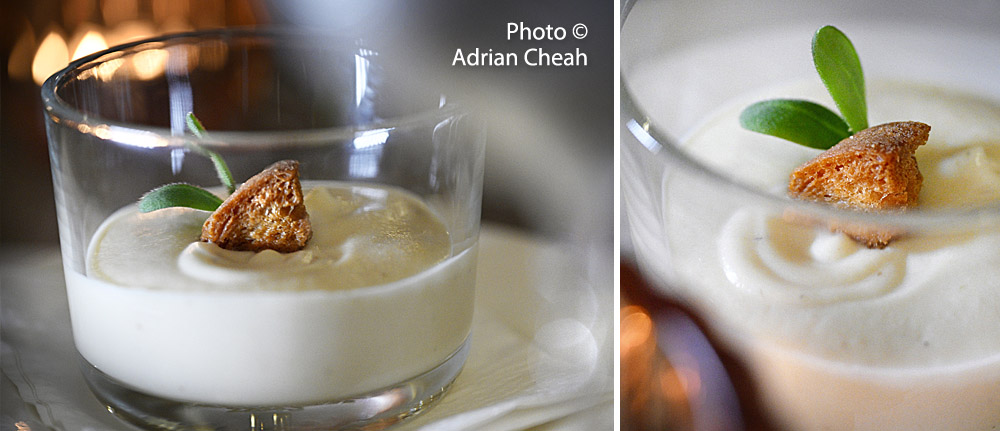
The Crème du Barry that arrived at the table was a luxurious cauliflower potage, pale-hued and silken in texture. Its consistency was remarkable, almost like warm ice cream: thick, smooth, and indulgently soft on the palate. This must be a new take on the traditional version, which is typically velvety and pourable, coating the spoon lightly rather than holding its shape. A golden crouton added texture and contrast, its crispness playing beautifully against the dense, velvety offering.

Left: a portrait of Jeanne Bécu, by François-Hubert Drouais in 1770, Museo del Prado. Public domain.
What is equally intriguing about this soup, besides its flavour, is its name. It pays homage to Jeanne Bécu, Comtesse du Barry (1743–1793), the last official mistress of King Louis XV. In 18th-century France, chefs often christened their creations after members of the nobility, think Crêpe Suzette, Tournedos Rossini, Pêche Melba, and of course, Crème du Barry. Madame du Barry’s name became synonymous with elegance and indulgence. The soup’s creamy whiteness was said to echo her fair complexion, or perhaps her powdered hair, coiffed in curls that rose like cauliflower florets. In the grand tradition of French gastronomy, naming dishes after nobles or patrons was both homage and artistry, edible tributes to beauty and power. Despite her gilded life, Madame du Barry met a tragic end, guillotined during the French Revolution. The soup, however, endured, outlasting scandal and monarchy alike, a small reminder of an age of decadence.
Mains in Focus
When it came to the mains, the menu offered three distinct paths: a delicate Cabillaud (cod) served with a chorizo hollandaise sauce, a slow-simmered Carbonnade Flamande (beef stew), and the sweet-glazed richness of Magret de Canard (duck breast).
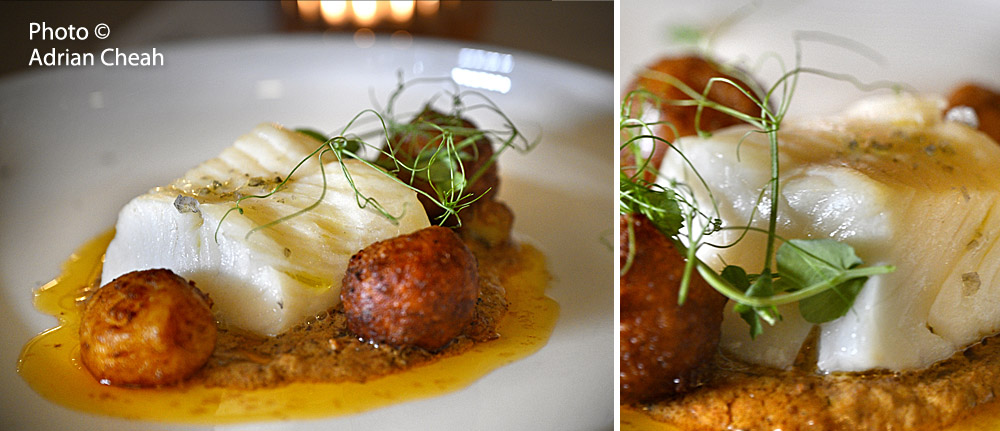
My lovely wife chose the cod, tender and moist, flaking easily under the fork. The hollandaise was buttery and bright with citrus, yet beneath that familiar richness, the chorizo lent a smoky, meaty depth. It was like France and Spain meeting on the plate, their flavours in lively conversation. The petite pommes dauphines, a classic French potato puff, rested alongside. Crisp and golden, they were made from a mixture of mashed potatoes and choux pastry (pâte à choux) which complemented the dish so well.

For mains, I opted for the Magret de Canard, the celebrated duck breast, which arrived sliced in half and accompanied by a lightly dressed salad. The portion was generous, and the meat, beautifully pink at the centre, suggested careful cooking. It had a firm, dense texture, lean and meaty, though it lacked the tenderness I was hoping to savour. The sauce was lovely, rich and well balanced, though a little more of it would have helped bring the elements together.
Chef Andy, trained in Paris at Le Cordon Bleu, may have intended this plating as a modern French statement, confident and minimalist. However, if the dish had been presented differently, sliced into thinner pieces and fanned out, the meat might have tasted more tender as the sauce could have coated each slice more evenly. It reminded me of how siew bak, Chinese roasted pork, is never served in large chunks but neatly cut into bite-sized pieces to balance texture and flavour in every mouthful.
According to Chef André Daguin's own book, "Foie Gras, Magret, and Other Good Food from Gascony", he recounts how he popularised the dish at his restaurant, Hôtel de France in Auch, Gascony, around 1959. Traditionally, it uses the breast of a mulard duck, a crossbred bird raised for foie gras production, prized for its thick, buttery texture. It felt almost like a small luxury to taste such a renowned French dish in Penang, without journeying halfway around the world.
I did not sample the third main, Carbonnade Flamande; however, from its rich, slow-cooked aroma drifting from nearby plates, it appeared hearty and comforting.

The pairing for the main was Château Pipeau Saint-Émilion Grand Cru 2016. According to the vineyard’s notes, it is “a wine with expressive fruit, an opulent nose of red berries, roundness on the palate, with good length and a harmonious and elegant finish. Qualities of fruit, together with greater aromas and tannins.” I suppose you need to be a wine enthusiast or an experienced sommelier to fully unpack that, I am not. Thanks to the house, I was served a complimentary glass of this lovely Bordeaux, and while I may not have the vocabulary to describe it, I certainly appreciated its smoothness and balance, which paired beautifully with the duck.
A Refreshing Pause

A pink guava sorbet with sour plum followed, a wink to local infusion amidst all that French flourish. It was bright, cleansing, and just tart enough to reset the senses. It reminded me how, in food as in life, pausing to reassess and realign brings clarity and deeper appreciation of what comes next.
Baba au Rhum

Baba au Rhum, a dessert that began as a Polish babka before the French transformed it into a legend, arrived at the table. The cake was soaked in rum and topped with Chantilly cream. The first spoonful was scrumptious, like biting into a rum-scented cloud. Chef Hooi Shing who was tasked to prepare the dessert went a step further in this lovely offering to include a scoop of chestnut ice cream and little cubes of mango.
The history of Baba au Rhum is just as rich. In Polish, babka (the diminutive of “baba”) refers to a yeast-based cake, often baked in a tall, cylindrical or bundt-like mold. The word baba literally means “grandmother,” perhaps reflecting the cake’s homey, traditional roots passed down through generations. The dessert reached France in the 18th century with Stanislaus Leszczyński, the exiled Polish king and father-in-law to Louis XV. According to Smithsonian Magazine, the dessert was popularized in Paris by pastry chef Nicolas Stohrer, who moistened the traditional Polish cake with Tokay wine and later introduced rum. Over time, this creation evolved into the French Baba au Rhum, blending Eastern European origins with Parisian innovation. (For clarity, it is unrelated to the Peranakan use of “Baba.”)

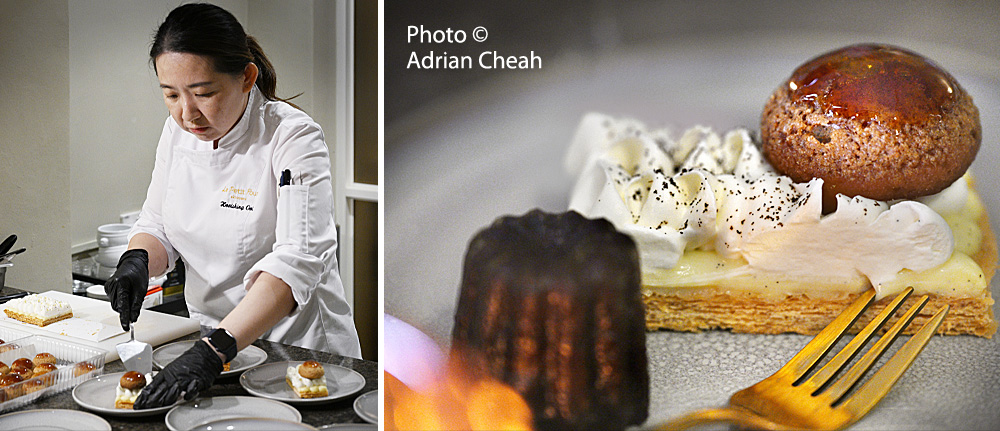
That was not all. There was a second surprise, a trio of petits desserts: a Saint-Honoré puff pastry topped with hazelnut praline, vanilla pastry cream, and vanilla chantilly, finished with a caramel-coated choux; a canelé infused with spiced rum; and a piece of 70 % dark chocolate filled with tropical tonka ganache. It was an elegant and uplifting finale, a sweet reminder of the kitchen’s creativity and finesse.
Reflections on the Bill and the Blessing

By now, you might be wondering: was it worth it? In a world where too many restaurants confuse minimalism with a hefty price tag, dinners like this remind me that an exclusive meal can still hold big ideas. Beyond the food, you are also paying for perspective, for the hours of craft behind the clarity of flavour, for the chefs’ vision that invites you to taste, to appreciate, to remember.
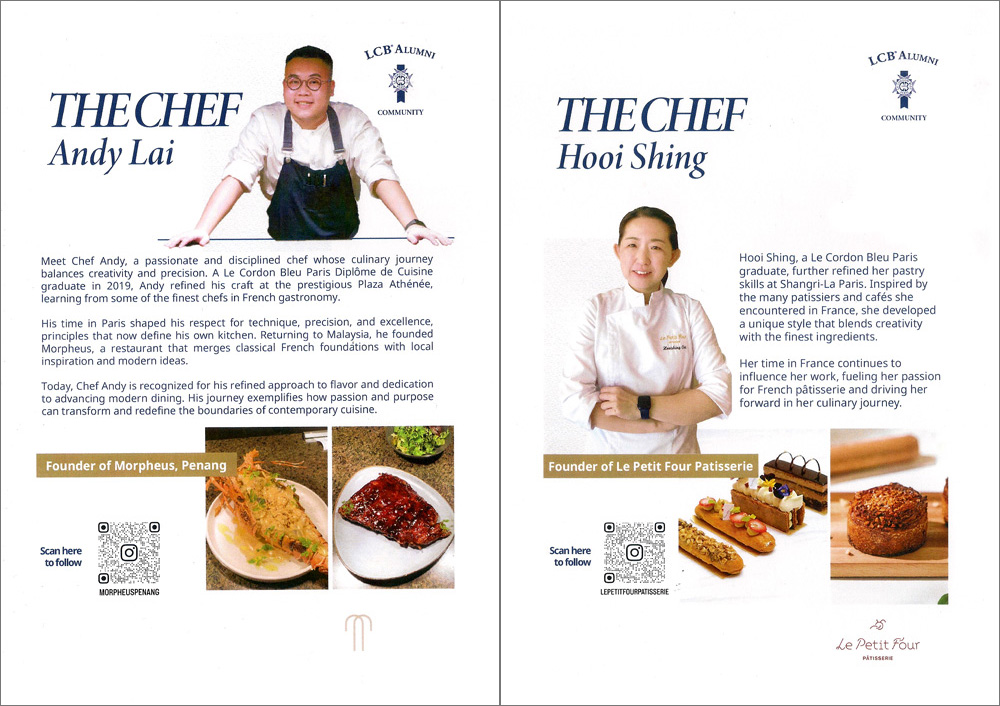
Chef Andy and Chef Hooi Shing, both alumni of Le Cordon Bleu Paris, orchestrated a magnifique Parisian evening of thoughtful cooking and warm hospitality. And no, I did not leave hungry. After a parade of six remarkable courses, I was pleasantly sated, close to bursting at the seams in fact, with absolutely no thought of stopping for char hor fun on the way home. So if you ever find yourself at such a rare evening, debating whether it is worth the indulgence, my answer is yes: for the experience, the artistry, and the "fabulicious" memory.
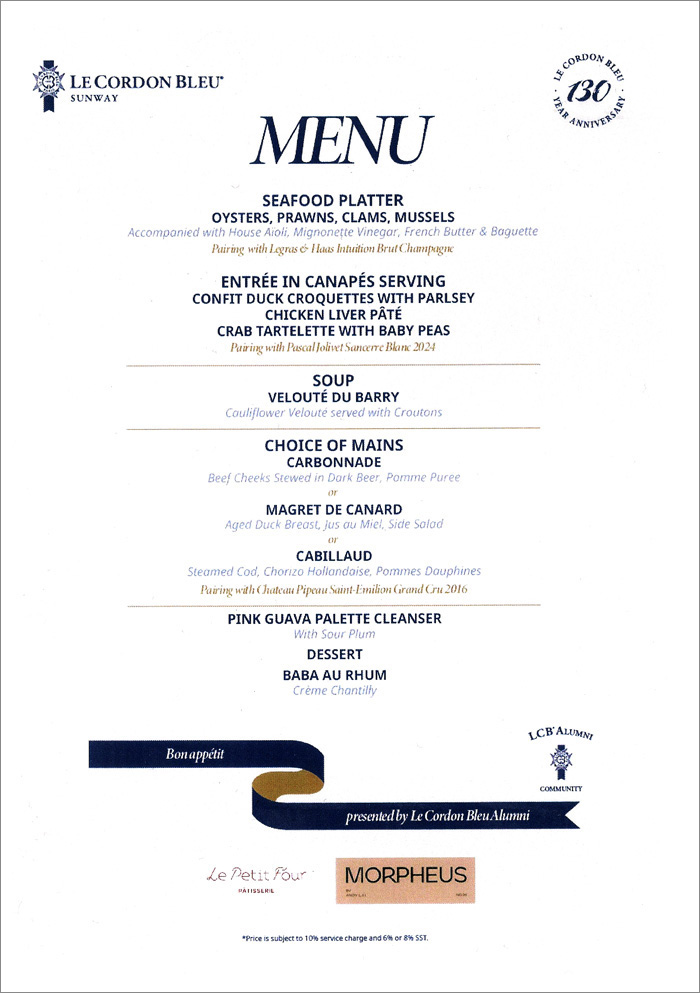
A themed dinner experience: À Table!
6-course tribute to timeless French flavours
25 October 2025, starts 7 pm
Morpheus Restaurant
RM 530 nett for two pax
Option: RM150 wine pairing per pax
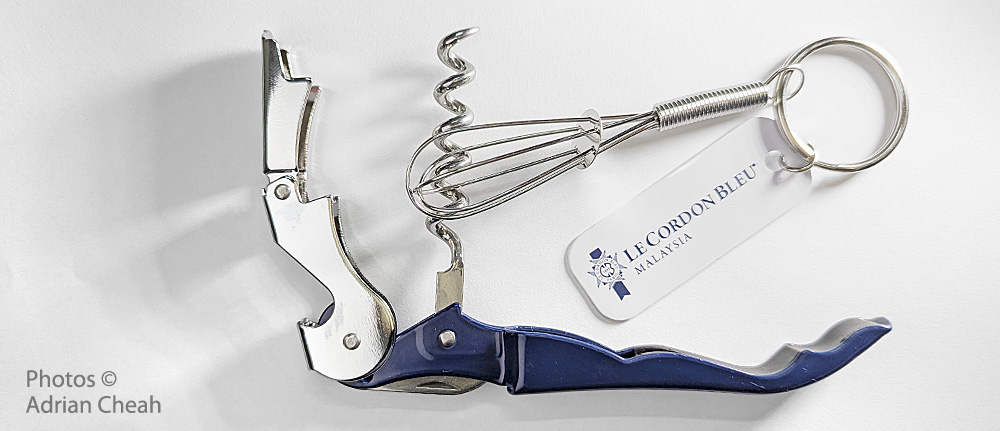
As a thoughtful gesture, guests were also presented with two Le Cordon Bleu souvenirs, a miniature whisk keychain and a wine opener. They were small tokens that captured the spirit of the evening, a celebration of French culinary craftsmanship.
-------------------------------------
Written and photographed by Adrian Cheah
© All rights reserved
25 October 2025
-------------------------------------
Morpheus Restaurant Penang
26, Lorong Aboo Sittee, George Town, Malaysia
Tel: +6012-273 9743
Open daily from 6 pm to 12 am except Sundays
Morpheus Restaurant Penang is situated at Lorong Aboo Sittee in the bustling city of George Town. It was established in April 2023 by head chef and owner Andy Lai, a graduate of Le Cordon Bleu, the prestigious culinary school in Paris. Le Cordon Bleu is renowned as the largest network of culinary and hospitality schools globally, blending innovation and creativity with tradition in its training courses, empowering aspiring culinary professionals to realise their ambitions.